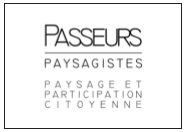
06/03/2025
[Fr] Décès de Philippe Auclerc
C'est avec tristesse que nous avons appris aujourd'hui le décès de Philippe Auclerc, co-fondateur de la maison d'édition "Loire et terroirs" et rédacteur...
Published on 13 December 2018 - Updated 08 November 2019
Cet article date d'il y a plus de 6 ans
In response to a proposal from its Scientific and Professional Board, Mission Val de Loire performed a study on the socio-economic value of Loire heritage and landscapes by choosing two pilot sites in each of the two regions. This drew on the experience of economic valuation of environmental amenities, by factoring in the well-being of individuals.
"For some years now, work has been ongoing in a bid to assess the importance of non-tradable goods, such as the Stiglitz - Sen - Fitoussi report which, as early as 2009, was already putting forward other indicators than GDP for gauging economic performance and quality of life", points out Yves Luginbühl, agricultural engineer and director emeritus of research (CNRS), who chairs Mission Val de Loire's Scientific and Professional Board.
"This also works with amenities, such as heritage and landscape,” the researcher, who authored a report entitled "Individual and social well-being, and landscapes" for the Council of Europe, goes on to say. "The idea then came to us, during the Scientific Board meeting, of assessing the Loire Valley landscapes, based on the premise that they harbour undeniable intangible, symbolic and emotional value. The ultimate goal is to define well-being indicators so as to steer different policies (agriculture, housing, etc.) and future spatial planning."
The study therefore amounts to consideration of the perception and images that residents have of the landscapes of the Loire Valley, which is not only an outstanding heritage for Unesco, but also the day-to-day living environment of those who live there and shape it. 80 individual interviews were held with residents during the study, along with various sharing workshops. 38 analytical maps were also drawn up. These mainly bear on the trends in land cover, agriculture and demographics since 2000, when the Loire Valley was added to the World Heritage List.
This study enabled employment and productive activities in the site studied to be assessed and such innovative tools to be recommended as mapping of places depending on the residents' level of well-being.
The analysis of these findings led to the publication of a study report, videos and a summary brochure for the attention of elected officials, to support them in public policy development.
The study now calls for collaboration with economists, not least so as to produce socio-economic measurement indicators.
""The views that can be enjoyed over the Loire from the levee – this is what residents appreciate: a Loire in full view, a landscape in full view."
A local official from Châteauneuf-sur-Loire
"
""You can tell that there is a genuine desire round here to preserve a heritage that is harmonious, attractive and old. This explains why lots of tourists come to this region."
A Saint-Sulpice resident
"
""I don't avoid agricultural plains but, honestly, when I go out for a walk or a run, I head towards Brain-sur-Authion, the countryside is nicer, there's a diversity... and I'm not saying that just because I'm a farmer's daughter."
A farmer's daughter
"
""Yes, I think there is a certain commitment towards heritage preservation. I think that the tourist information centre, the municipal communities are very involved as they are aware of what a boon tourism is."
A vinegrower
"
Put together from the interviews, trails and site visits, these videos were made to illustrate the participants’ similarities and differences in opinion and to provide a tool for informing debates during the workshops on the influential factors.
Study performed on two study sites, across fifteen municipalities within the boundaries of the listed site, located in the Loiret (sectors from Châteauneuf-sur-Loire to Sully-sur-Loire) and Maine-et-Loire (sectors from Trélazé to Saint-Mathurin-sur-Loire).
Analysis of landscape dynamics from datasets (agriculture, employment, industrial fabric, etc.), study on the level of well-being residents derive from the landscape, conducted through individual interviews each lasting about an hour (80 interviews), collective interpretation trails of the landscape and heritage as well as sharing workshops bringing together elected officials and the residents taking part.
Financed thanks to ERDF funds, the study is the culmination of collective efforts involving researchers from several research laboratories (CITERES, LADYSS, CEMOTEV) and landscape gardeners from "Passeurs paysagistes".

